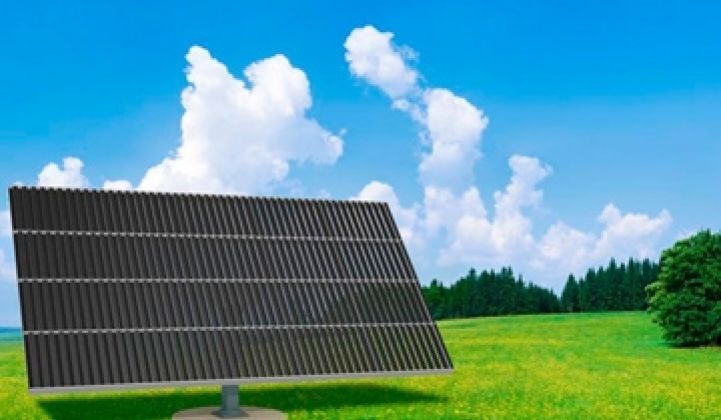Morgan Solar, which began pilot production of its solar concentrators in the last few weeks, has raised $4.7 million as part of its first-round funding.
The Toronto startup lined up Iberdrola Renewables, Nypro and Turnstone Capital Management. Iberdrola is a major wind developer out of Spain while Nypro is a plastic manufacturer in Clinton, Mass.
Iberdrola, which is developing solar power projects, could help Morgan Solar on its path to commercialize its technology, which uses acrylic and glass lenses to concentrate the sunlight and direct it to solar cells for electricity production.
Morgan Solar, founded in 2007, set out to raise $8.5 million total, and expects to close the round in a few months, said John Paul Morgan, a co-founder and chief technology officer. The company previously had raised a seed round of $1.5 million in equity and non-cash contribution (see Out of Africa: New Concentrating-Solar Tech Inspired by Congo Stint).
Last month, the company moved into its pilot production facility, which has the capacity to produce 500 kilowatts of solar panels per year, Morgan said. It plans to expand its pilot line for commercial production next year, with a starting capacity of at least 5 megawatts, he added.
Unlike conventional solar panels, Morgan Solar's 2-meter by 1.6-meter panel comes with 5.5 square-millimeter solar cells topped by rows of 20 square-centimeter acrylic lenses, Morgan said. In between each acrylic lens and the cell is a small glass lens.
Instead of using only glass, the company opts to use acrylic for sunlight collection because it's lighter weight, cheaper, rugged and more transparent than glass, Morgan said. But to achieve the high concentration, the company relies on the glass lens, which can withstand higher temperature.
The startup's panels could concentrate the sun 1,000 times, Morgan said. It's using triple-junction cells that make use of materials such as germanium, indium and gallium, though Morgan declined to disclose the company's cell suppliers.
That type of cells, which are used by other solar concentrator developers, is more expensive than the silicon cells commonly found in solar panels today. But concentrator solar companies argue that the cost is offset by the greater amount of electricity that could be produced with their technologies.
Morgan Solar expects its solar panels to be able to convert 25 percent to 30 percent of sunlight into electricity. The panels coming off the pilot line haven't quite reached that range of efficiencies, Morgan said. Its commercial products in 2010 should get there, he added.
The panels would be mounted in dual-axis trackers to follow the sun's movement.
Concentrating solar technologies are fairly new to the market, but how well they could compete with conventional solar panels or solar thermal power systems (which uses the sun's heat to produce steam and generate electricity) remains a big unknown.
Many concentrating solar startups received hefty support from investors a few years ago when silicon prices were high. The spot market prices for silicon have fallen by 50 percent over the past year, and the recession has prompted many conventional silicon solar panel makers to idle some of their production lines.
Solar thermal power developers have convinced utilities that they could deliver cheap solar electricity by building huge projects at hundreds of megawatts each. Morgan Solar also is targeting the utility market.
Morgan argued that silicon prices will stabilize, and there is a bottom limit to the cost of making silicon panels. Solar panels that rely on other semiconductors, such as cadmium-telluride or amorphous silicon, would have to overcome problems with performance or raw material supply, he added.
And those limits would eventually render the products non-competitive against concentrating solar systems, Morgan said.
"CPV using commodity materials will be the only solar technology that can hit terawatt level. Every other solar can be cost effective and hit gigawatt level," he said.
There is a whole lineup of concentrating solar companies eager to prove that the economics work. Companies such as SolFocus and Concentrix Solar are also targeting the utility market.
Meanwhile, Soliant Energy, which recently brought on a new CEO, is marketing its systems for the commercial rooftop space (see Soliant Gets New CEO to Evangelize Concentrating PV).
Image via Morgan Solar.



